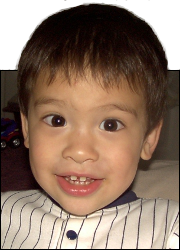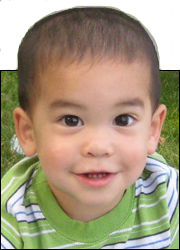I had a misunderstanding with a member of the county sheriff’s office.
I was driving home, on a straight section of road, and I could see police lights flashing near the upcoming intersection. I was about a half mile away, so I couldn’t tell if it was before or after the intersection. And it was the last intersection before my driveway.
As I approached and slowed down for whatever incident the officer was handling, I saw the police car was before the intersection, as was a downed tree. The tree had fallen across just over half the road – the lane I was travelling in.
So I slowed and then stopped. Here is an artist’s rendering of the scene as viewed from above:

There were no other vehicles around. The police car’s lights were flashing, but no officer was visible.
As you can see from the drawing, and as I could see from the driver’s seat of my vehicle, there was room to go around the tree. And the officer had left room between the police car and the tree. And the police car was in the oncoming lane, leaving me room to drive normally after I passed the tree. The drawing does not show that there is a ditch on my side of the road but not the other side.
I sat for several seconds, wondering what to do. If the police car had not been there, I would’ve swerved around the tree without much thought. My first thought was the officer was directing traffic. But there was no officer and no traffic. My other thought was that the officer was sitting there to warn people of the hazard in the road. I decided that was the case and proceeded around the tree. Better that than a 4 mile detour that wasn’t really needed.
As I was going around the tree, the officer opened the police car door and got out, approaching my vehicle. I stopped and rolled down my window.
The exchange went like this:
Her: “What are you doing?”
Me: “Heading home.”
Her: “You live around here?”
Me: “Yes, straight down this road, over the next hill.”
Her: “I didn’t want you to go around that tree.”
Me: “Oh, sorry.”
Her: “The branches could have punctured your tires.”
Me: “I thought there was room to go around…”
Her: “I was blocking the road until the tree crew got here.”
At this point, a fire truck pulls up. Seriously, the timing was great.
Her: “Here they are. Now be careful, there’s a ditch right there.”
Me: “Okay, thanks.”
Then she turned to head to the fire truck and I drove off home.
You may have read the conversation in your head with certain voices or tones of voices. For the officer, re-read it and this time use a voice that’s a cross between wondering and apologizing. She was not harsh at all.
My first thought after leaving was “if you’re going to block the road, then block the road.” or, to paraphrase Margaret Thatcher, “if you have to tell people that you are blocking the road, then you are not blocking the road.”
By her actions, her words, and her tone, my conclusion is that she is new to the area. In general, people who live on dirt roads, or drive on them much, are not very concerned about sticks or ditches. Those are everyday occurrences. But she was genuinely worried about them.
That would explain why she parked in a way that was not blocking the road – she didn’t want to get close to the ditch. And she didn’t park near the tree – thus leaving me room to go around – because she was afraid of the branches. Maybe afraid is too strong a word. But she was at least overly cautious.
And I do believe that she thought she was blocking the road. But she was assuming that other people thought as she did about branches and ditches. She thought she didn’t leave room for other cars because she wouldn’t get that close to those hazards.
Maybe she’s a rookie? Maybe she has a softer personality? Whatever it is, she needs to learn to be more direct as an officer. When she says “I didn’t want you to do that”, is that a statement of regret or something that I’m supposed to interpret to mean something else? An officer should give commands, especially in traffic situations. Ambiguity leads to confusion.
I’ve noticed the same thing with my mom growing up and with my wife and with other moms. Instead of telling one of the kids to set the table, she will say “Will someone set the table?” to no one in particular. It seems that women like to communicate indirectly. And this lady in particular was not a type-A personality.
Dear police officers, if you want people to do something in particular, make it obvious and communicate clearly and directly.
So also you, unless you utter by the tongue speech that is clear, how will it be known what is spoken? For you will be speaking into the air.
1 Corinthians 14:9

 This is Alpha, the first-born, when he was 2YO.
This is Alpha, the first-born, when he was 2YO. This is Beta, the second-born, when he was about 2YO.
This is Beta, the second-born, when he was about 2YO. This is Gamma, the third-born, when he was about 18MO.
This is Gamma, the third-born, when he was about 18MO.








